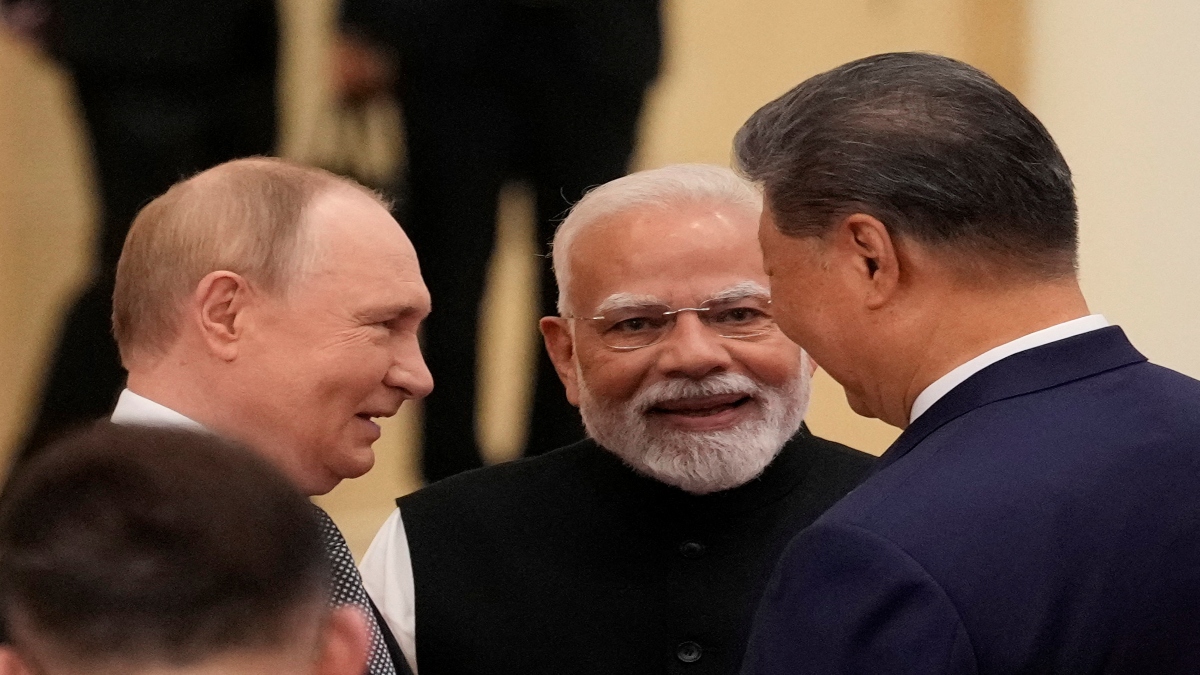“I aim very high, and then I just keep pushing and pushing and pushing to get what I’m after.”
— Donald Trump, ‘The Art of the Deal’
US President Donald Trump has always revelled in his ability to negotiate hard. His aggressive, often intimidating, style is designed to shock and awe his opponents. A glimpse of this came from a late-1980s CNN interview with Larry King, where Trump abruptly commented on the host’s “bad breath”. This threw King off balance and he could not recover from the blow through the interview.
Maggie Haberman, in Confidence Man: The Definitive Biography of Donald Trump, captures this persona as she portrays Trump as a leader thriving on unpredictability, confrontation, and even chaos. Such has been his obsession with power that he even admired China’s Tiananmen Square crackdown, calling it an expression of “strength”.
Trump’s ongoing tariff battles with New Delhi mirrored this pattern: sheer unpredictability, relentless pressure tactics, and unrestrained show of strength.
Haberman notes that Trump possesses “both the thickest skin and the thinnest skin of any public figure I have ever covered”. It all depends on how he perceives his opponent. Accordingly, he fosters “a sense of menace” through his “enforcers” and “informants”.
This approach was on full display in Trump’s tariff policy. When dealing with China and Russia, Trump showed thick skin, exhibiting calculated restraint, admiring their authoritarian strength. But with Bharat — a democracy and a strategic American partner — his thin skin was at display as he chose aggression. In all this, people like Peter Navarro and Scott Bessent acted as his “enforcers”, threatening punitive tariffs to force concessions.
Impact Shorts
More ShortsHaberman highlights another defining trait: Trump’s refusal “to be shamed, to step away from a fight, or to accept traditional rules of politics”. Nowhere was this clearer than in his repeated — over 30 times — false claims of mediating peace between Bharat and Pakistan, supposedly preventing war through tariff threats. New Delhi firmly rejected this narrative, clarifying that a temporary pause in Operation Sindoor was at Pakistan’s request, not America’s intervention.
Trump’s strategy relied on his perception of Bharat being a soft target, thus an ideal nation for projecting his strongman image to his MAGA base and the world. Trump, however, underestimated the transformation Bharat underwent under Prime Minister Narendra Modi. Post-2014 Bharat became more confident, assertive, civilisationally rooted, ideologically lucid, and unwilling to be cornered. The days of quiet compliance were over.
Traditionally, Bharat has always had a mind of its own. Fareed Zakaria, in his book The Post-American World, describes how “Indians are not likely to view foreign policy as a crusade or to see the conversion of others to democracy as a paramount national aspiration”. The Hindu mindset, he writes, is to live and let live. “So, Indians are also averse to public and binding commitments of the country’s basic orientation. India will be uncomfortable with a designation as America’s ‘chief ally’ in Asia or as part of a new ‘special relationship,’” Zakaria adds.
However, with Modi at the helm of Bharat’s affairs, there has been a renewed sense of confidence and self-assuredness. Trump, to his misfortune, chose this moment to poke at New Delhi. The outcome was obvious: Bharat not only resisted but also recalibrated its strategic priorities. Within a few days of the 50 per cent tariff kicking in on Bharat, Prime Minister Modi was in China.
It was PM Modi’s presence at the Shanghai Cooperation Organisation (SCO) meeting that helped build the narrative of a China-led world order, even when 20 heads of state, including Russian President Vladimir Putin, were in the audience. The Time magazine, in its recent report, highlighted how the summit in Tianjin “grabbed the world’s attention this weekend. Much of the commentary was centred on the presence of India’s Prime Minister Narendra Modi, who visited China for the first time in seven years”.
PM Modi’s presence at Tianjin was a diplomatic coup for China, with most Western commentators seeing it as a worst nightmare for Trump. According to The Economist, which has largely opposed Modi, alienating Bharat was a “grave mistake” by the US, and it could well be an opportunity for New Delhi to realise its claim of being a “superpower-in-waiting.” Even The New York Times, which not very long ago had advertised the position for Modi-baiting journalists, acknowledged in its article, ‘The Nobel Prize and a Testy Phone Call: How the Trump-Modi Relationship Unraveled’, that Trump’s repeated claims about “solving” the Bharat-Pakistan conflict deeply infuriated Modi — risking Delhi’s drift toward Beijing and Moscow.
Trump’s aggressive tariff strategy and confrontational diplomacy were extensions of his lifelong persona as a “deal maker”. Yet, when applied to New Delhi, these tactics collided with a ‘Modified’ nation unwilling to be arm-twisted. Instead of submission, Bharat diversified alliances, deepened ties with Japan, Russia, and ASEAN nations, and further asserted its geostrategic independence on the global stage.
The result: America, which not very long ago projected Bharat as a linchpin of its Indo-Pacific strategy, looked both confused and confounded.
One hopes the damage, though significant, is not permanent. In a world of shifting power balances, good relations between Bharat and the United States is not just desirable — it is essential.
The lesson for this and future American administrations is clear: A relationship with a civilisational state like Bharat won’t be sustainable without mutual respect. Bullying would drive it elsewhere.
Views expressed in the above piece are personal and solely those of the author. They do not necessarily reflect Firstpost’s views.
The author is Opinion Editor, Firstpost and News18. He can be reached at: utpal.kumar@nw18.com
)